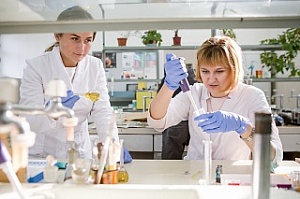In a new research project, staff of TSU’s Laboratory of Phytochemistry are studying the chemical composition of plants of the Silene genus that can be used as promising sources of antimicrobial agents. These drugs cause much fewer harmful side effects than synthesized medications, and it is much more difficult for pathogens to develop resistance to the action of complex phytopreparations than to chemicals.
- Synthetic drugs often have a narrow spectrum of action and
individual intolerance, and microorganisms rapidly advance in their
resistance to them, - says Larisa Zibareva, head of the Laboratory of
Phytochemistry. - Plants synthesize many biologically active substances
(BAS) of various chemical natures and are alternative sources of
effective drugs against resistant human pathogens. They represent a huge
resource for developing new medicines, including antimicrobials.
Studies show that plant-based preparations can be no less, and
sometimes even more, effective. So, for example, in joint research
conducted with scientists from Siberian State Medical University,
phytochemists discovered high antifungal activity in plants of the genus
Lychnis chalcedonica. According to the results, fungistatic activity of
its extract is from 8 to 30 times higher than the antifungal
antibiotics nystatin and griseofulvin.
In the new project, scientists are studying the chemical composition
of plants of the Silene genus, which has about 700 species. These plants
synthesize compounds (flavonoids, ecdysteroids, and others) that are
related to those that contain lychnis, and are highly likely to have a
strong antimicrobial effect. Phytochemists extract biologically active
complexes from the extracts of the Silene raw material, separate them
into active substances using column chromatography, and with
pharmacologists investigate their biological activities.
- Our task is to identify promising types of medicinal plants with a
certain composition and content of BAS showing antimicrobial activity,
and to study their adaptive capacity in the Tomsk Region, - says Larisa
Zibareva. - When obtaining positive results are obtained, it will be
possible to recommend complexes of promising species of the genus
Smolevka as an alternative to antibiotics for further pharmacological
study.
The popularity of herbal preparations is increasing every year. In the US and Europe, their share is close to 10 percent of all medicines, and in India it is almost 25 percent. In China, which has long been famous for the high efficiency of medicine, medicines of natural origin are mainly used and their share in the therapeutic arsenal reaches 80 percent

